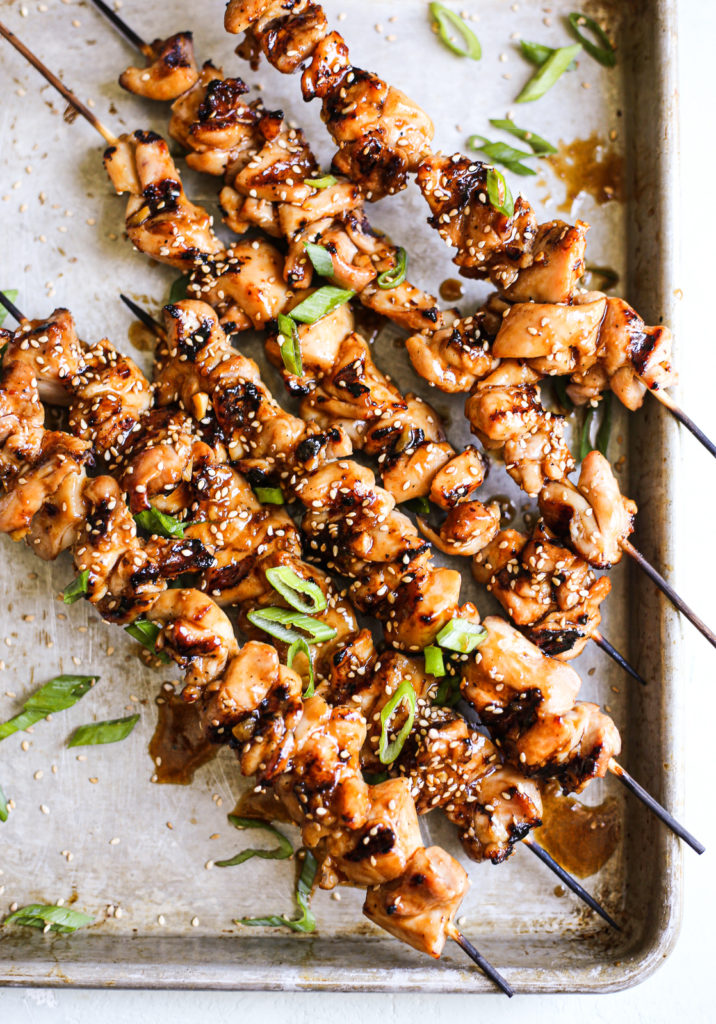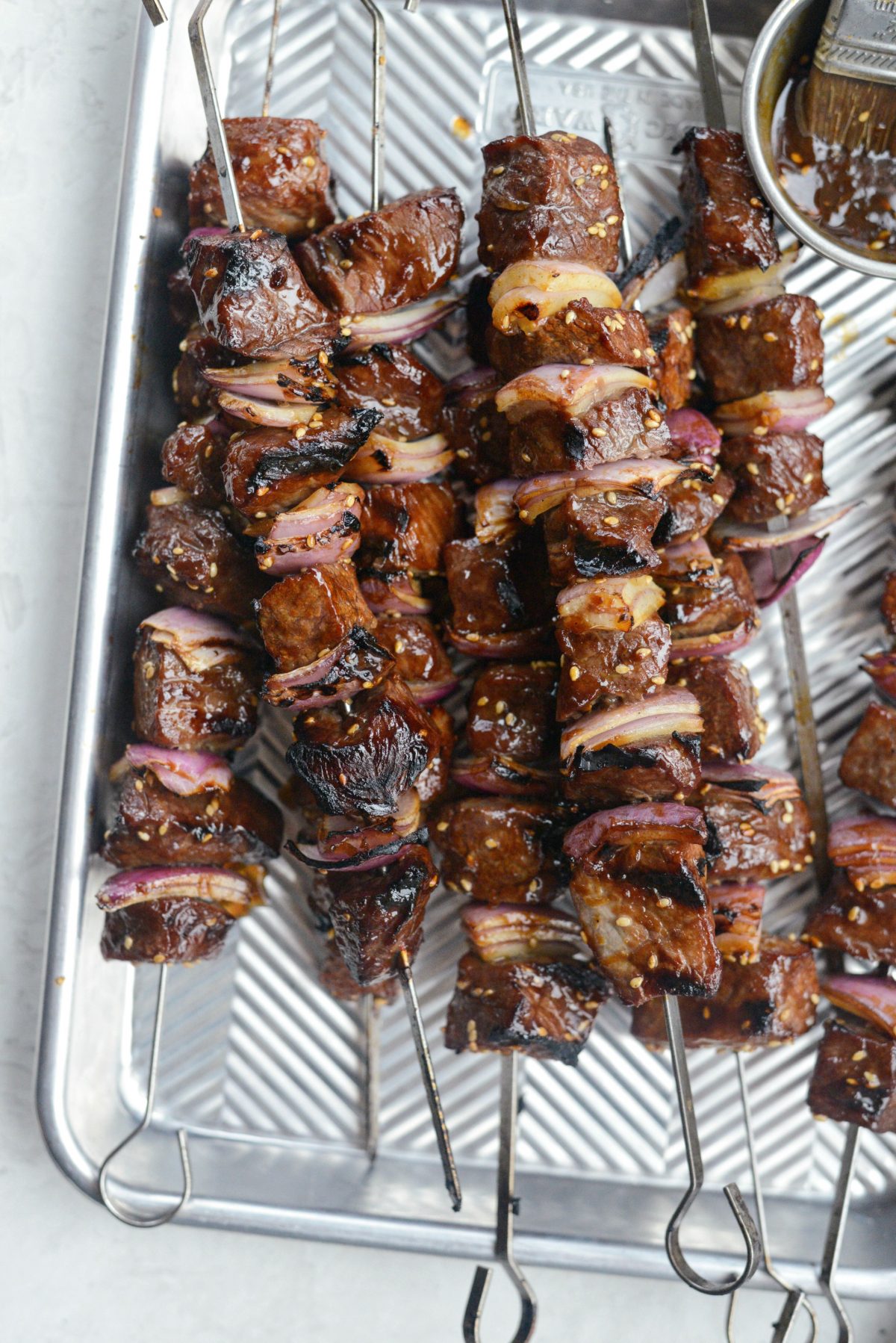
It is achieved by a different and lengthier process of roasting the sesame seeds, and has a more intense taste. In the Gaza Strip, a rust-colored variety known as "red tahina" is served in addition to ordinary tahina. It is a main ingredient in a seafood dish called siyadiyeh. It is also used as a sauce for meat and fish. It is served as a dip with pita, or a topping for falafel and shawarma, and as an ingredient in various spreads. In the Levant, tahini ( Levantine Arabic: t'hine) is a staple foodstuff prepared with salt, lemon juice, and optionally mashed garlic. It is also served baked in the oven with kufta made of lamb or beef with spices and herbs, or with a whole fish in the coastal areas and the Sea of Galilee. It is also used as a sauce for meat and fish, and in sweet desserts like halva, halva ice cream and tahini cookies. It is served as a dip with flat bread or pita, a topping for many foods such as falafel, sabich, Jerusalem mixed grill and shawarma, and as an ingredient in various spreads. In Israel, tahini ( Hebrew: טחינה t'hina) is a staple foodstuff. In Iraq, tahini is known as rashi, and is mixed with date syrup ( rub) to make a sweet dessert usually eaten with bread. In Turkey, tahini ( Turkish: tahin) is mixed with pekmez to make tahin-pekmez, which is often served as a breakfast item or after meals as a sweet dip for breads. Ardeh and halvardeh are among the souvenirs of the Iranian cities of Yazd and Ardakan. It is also eaten during breakfast, usually with an accompanying sweet substance, such as grape syrup, date syrup, honey, or jam. In Iran it is used to make halvardeh ( حلواارده), a kind of halva made of tahini, sugar, egg whites, and other ingredients. Tahini is called ardeh ( ارده) in Persian. In Cyprus, tahini, locally pronounced as tashi, is used as a dip for bread and sometimes in pitta souvlaki rather than tzatziki, which is customary in Greece it is also used to make "tahinopitta" (tahini pie). Jars of tahini ready-mixed with honey or cocoa are available in the breakfast food aisles of Greek supermarkets. In Greece, tahini ( Greek: ταχίνι) is used as a spread on bread either alone or topped with honey or jam. In Armenia, tahini can be used as a sauce to put on lahmajoun. It is usually spread on bread and eaten as a quick snack. It sometimes has mashed or sliced pistachio pieces sprinkled inside or on top. A sweet spread, halawa taḥīniyya ( حلاوة طحينية "sweet tahini"), is a type of halva sweet. Tahini sauce is also a popular topping for meat and vegetables in Middle Eastern cuisine. Hummus is made of cooked, mashed chickpeas typically blended with tahini, lemon juice and salt. Tahini-based sauces are common in Middle Eastern restaurants as a side dish or as a garnish, usually including lemon juice, salt, and garlic, and thinned with water. Others do not recommend refrigeration, as it makes the product more viscous and more difficult to serve. īecause of tahini's high oil content, some manufacturers recommend refrigeration to prevent spoilage. It can also be prepared with untoasted seeds and called "raw tahini", which is sometimes sold as an organic food product. The floating kernels are skimmed off the surface, toasted, and ground to produce an oily paste.


The crushed seeds are soaked in salt water, causing the bran to sink. Tahini is made from sesame seeds that are soaked in water and then crushed to separate the bran from the kernels. In North America, sesame tahini, along with other raw nut butters, was available by 1940 in health food stores. Sesame paste is also used in Indian cuisine. Sesame paste is an ingredient in some Chinese and Japanese dishes Sichuan cuisine uses it in some recipes for dandan noodles. Tahini is mentioned as an ingredient of hummus kasa, a recipe transcribed in an anonymous 13th-century Arabic cookbook, Kitab Wasf al-Atima al-Mutada.

The historian Herodotus writes about the cultivation of sesame 3500 years ago in the region of the Tigris and Euphrates in Mesopotamia. The oldest mention of sesame is in a cuneiform document written 4000 years ago that describes the custom of serving the gods sesame wine.

In Turkish and also in Italian, the original root tahin is still used instead of the globally accepted Greek adjustment to the word. Tahini is a loanword from modern Greek tachíni ( ταχίνι) which was originally adopted from the Ottoman Turkish "tahin". The word tahini appeared in English by the late 1930s. It is derived from the root ط ح ن Ṭ-Ḥ-N, which as a verb طحن ṭaḥana means "to grind", and also produces the word طحين ṭaḥīn, "flour" in some dialects. Tahini is of Arabic origin and comes from the colloquial Levantine Arabic pronunciation of ṭaḥīna ( طحينة), or more accurately ṭaḥīniyya ( طحينية), whence also English tahina and Hebrew t'china טחינה. Look up tahini in Wiktionary, the free dictionary.


 0 kommentar(er)
0 kommentar(er)
